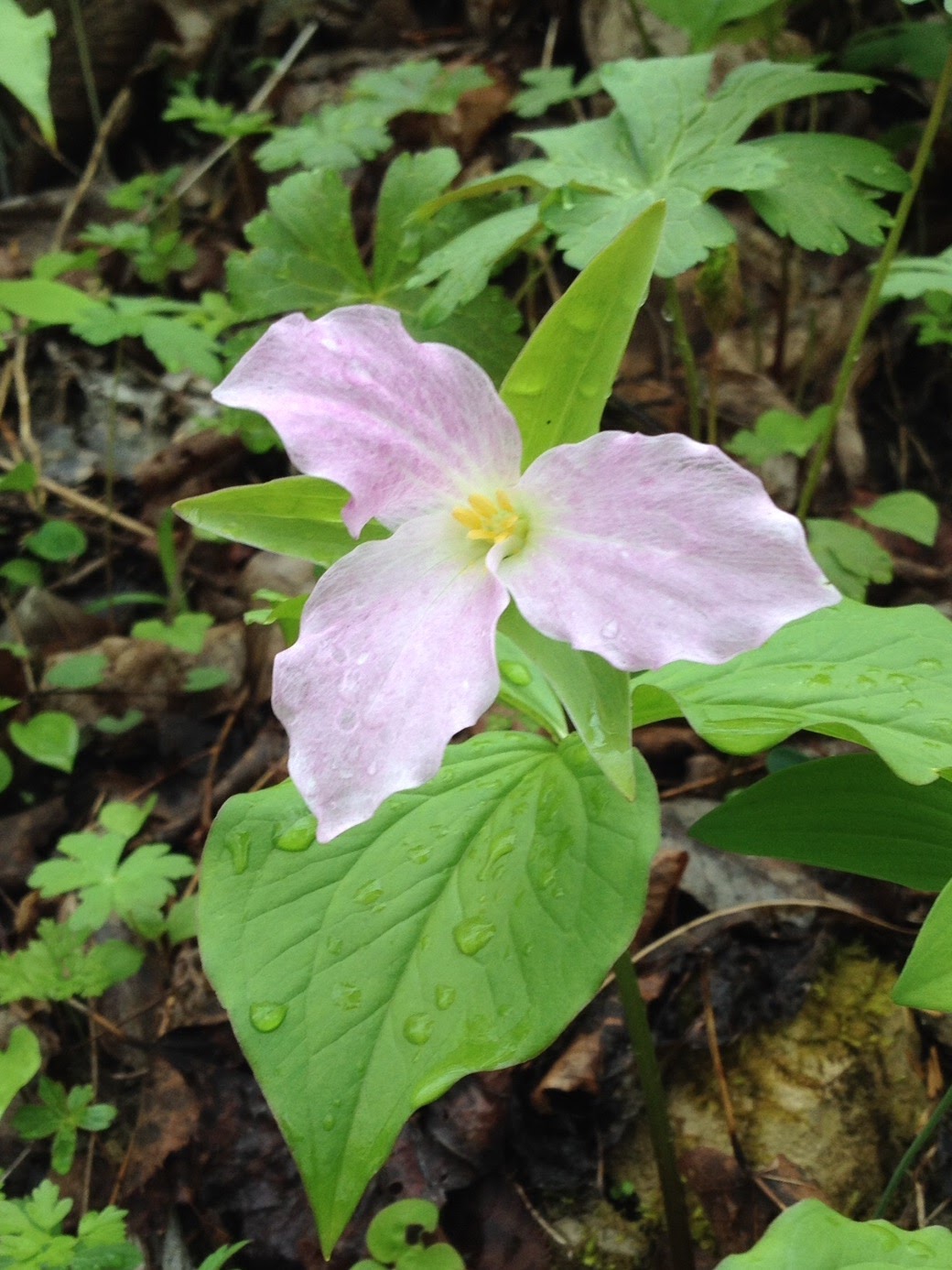By Susan Swala, Town & Country Garden Club
The wildflowers are popping up along the back roads and trails of Greene County. Starting with the bright yellow Coltsfoot, usually the first to bloom in March, there is a changing array of colorful flowers to delight the eye. Some can be seen from the car, but to really see the greatest variety, walking the trails, meadows and woods yield the best views.
Next to bloom is the short yellow Celandine that form a thick carpet along roadsides with a mat of green leaves. Bloodroot, with its bright white flower and red stem can best be seen in the woodlands, as can the frilly Dutchman’s Breeches. Wild Violet in white and purple, pink Wild Geranium and Wild Phlox also join the spring bloom in semi wooded areas. Virginia Bluebells are show stoppers, often growing in large drifts on the edge of the woods. Yellow Trout Lilies can be found along streams and flood plains. Best known of all of our spring wildflowers are the Trilliums, ranging from pure white to deep red, often growing up steep banks in the woods.
Two trails in the county, one in the western end, the Enlow Fork Trail and in the eastern end, the Greene River Trail, are great walking trails where a plethora of spring wild flowers can be seen, beginning in the end March, through mid-May. The Greene River Trail is an easy 8 mile walk along the Monongahela River. There is a guided wildflower walk usually around the last Sunday in April at Enlow Fork. This is a wonderful place to see drifts of Blue-Eyed Mary and often, Fire Pinks, the only true red flower in the spring. Check their website, Enlow Fork Wildflower Walk for further information. A very helpful resource to take along on your walk, Wildflowers of Pennsylvania, by Mary Joy Haywood and Phyllis Monk.
Many gardeners would like to grow wildflowers in their gardens. It’s tempting to dig them in the woods to transplant, but it is ill advised. Often transplanting is not successful, resulting in dead plants. Better to buy from a reputable nursery such as Sylvania Natives, who can supply healthy plants. Try to recreate a similar environment to its native growing conditions, including; amount of sunlight, moisture and a humus rich soil.
